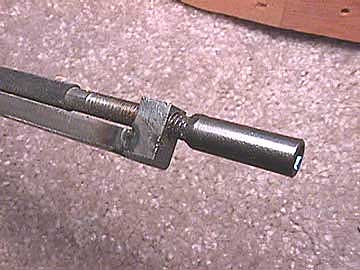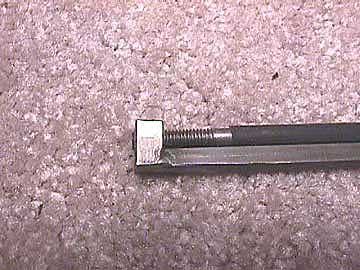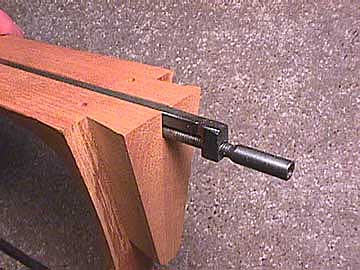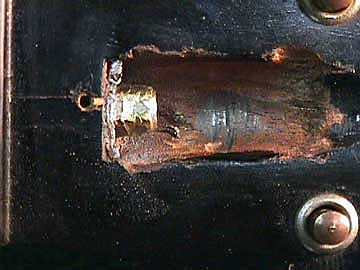This is a two-way bending rod:

Instead of a channel, this rod has a second rod with threaded ends welded to it. One end with right hand thread and one with left hand thread allows a push-pull action just like the two way compression rod.

As the threaded rod is turned it bends the other rod forward or back, and because it's trapped in a tight channel in the neck, both rods bend together, taking the neck with them:

These rods may be mounted either way, but conventionally, the fixed rod is placed up against the fingerboard. That way when it's turned to the right, the neck bends backward, just as in the compression system.
Like the other two-way rods, these are a bit more fragile than the single action ones, chiefly because of the welded sections and double threading, which is difficult if not impossible to lubricate. Additionally, because the entire rod turns when you adjust, there's a lot of friction through the length of the tight fitting channel.
These two way bending rods have a very interesting advantage in that it is possible to install them in such a manner that they may be extracted easily and replaced without major surgery.
Adjusting Truss Rods
It's extremely important to remember that truss rods are for adjusting neck relief only.
Sighting down the fingerboard looking at the corners of the frets, you can get an idea of the general "shape" of the neck. A severe backbow or forward bend will be quite obvious. A better way to judge relief is to hold a string down near the nut and at the body:

Looking closely under the string, you can see how much clearance there is between the string and the frets in the middle of the neck. If the string touches the frets, then the neck needs a bit of relief. If there's a lot of clearance, then it's likely the neck has too much relief, and the truss rod should be tightened. Check out this article in the buzz diagnosis section for more info on this business.
Maintaining Adjustable Rods
Just about the nicest thing you can do for your adjustable rod is to oil him up:

Where it's possible to remove the adjusting nut, you should do so, and lube the threads. You only do this once, not each time you adjust things. It's just that the factories hardly ever lube the threads, so if you don't, then you may not get a good "feel" of the amount of tension you're applying. You might be fighting friction on the threads. I've seen a few old instruments where the threads were severely rusted and tightening the nut would risk breaking the rod by twisting it.
This old Gibson truss rod has been adjusted so many times, and tightened so tight, that the nut is a real wreck:

Not only that, but the washer is bent and buried its full thickness into the end of the truss rod pocket.
When I see a truss rod nut as messed up as this one, I try to replace it right away, and, if possible, correct the damage to the washer and/or wood.
More